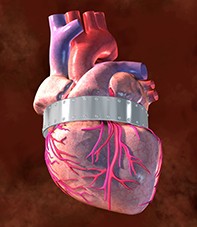Peer Reviewed
Perspectives
Assessing ischaemia in stable CAD
Abstract
In patients with suspected angina a diagnosis of coronary artery disease (CAD) should be confirmed and then they should be assessed for evidence of ischaemia. The presence of ischaemia has prognostic implications for all patients with CAD.
Key Points
- Intermittent chest pain related to atherosclerotic narrowings and responsible for reversible ischaemia may be a better definition of stable angina than currently used descriptions.
- Established indications for revascularisation in patients with stable coronary artery disease (CAD) are the persistence of symptoms despite optimal medical therapy and intolerance to medical therapy.
- Patients with stable CAD and evidence of moderate to severe ischaemia benefit prognostically from revascularisation; those without demonstrable ischaemic myocardium do not gain such benefits.
- Society guidelines on myocardial revascularisation recommend the documentation of ischaemia by functional testing, preferably using noninvasive methods, before elective invasive procedures.
- Both coronary angiography and computed tomography coronary angiography can demonstrate atherosclerotic CAD; however, neither will provide information on the functional significance of the disease.
- Myocardial fractional flow reserve is an index of the functional severity of a coronary stenosis.
- Coronary angiography accompanied by fractional flow reserve is the ‘all-in-one’ method that can confirm the presence of atherosclerosis, evaluate for ischaemia and allow for the appropriate treatment, all at one point in time.
Purchase the PDF version of this article
Already a subscriber? Login here.

